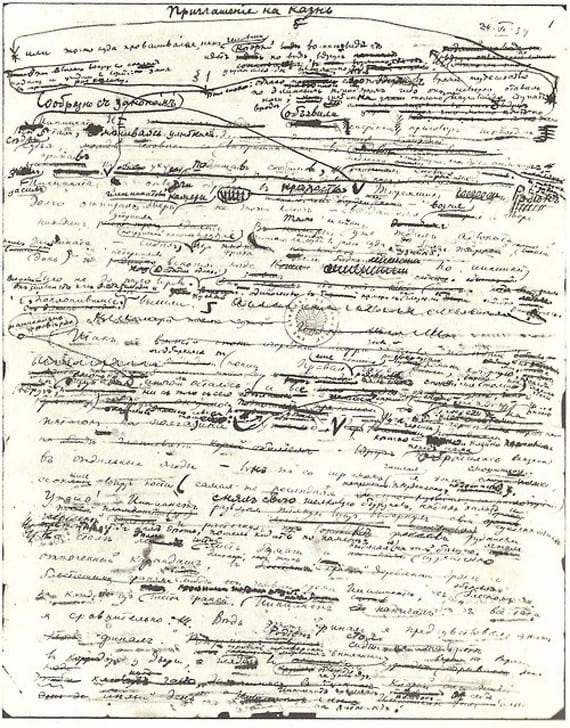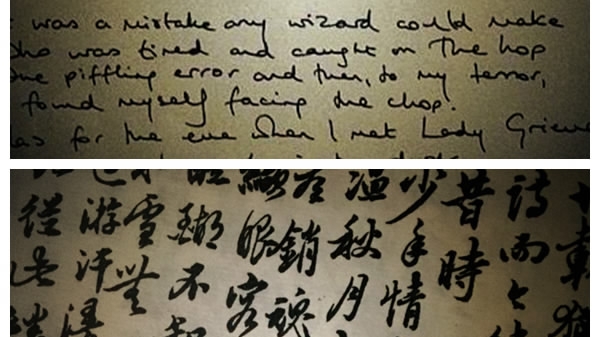Due to the convenience of modern technology, most authors now prefer to write on computers.
However, for centuries, authors both in China and abroad have written by hand. Their manuscripts show not only their handwriting style but the process of their thoughts.
Here are some renowned authors’ manuscripts.
Clear and classic

A manuscript page from Chinese Nobel laureate Mo Yan’s “Herbivorous Family” /Ministry of Toufu Photo
A manuscript page from Chinese Nobel laureate Mo Yan’s “Herbivorous Family” /Ministry of Toufu Photo

A page from Virginia Woolf’s “Mrs. Dalloway” /Pinterest Photo
A page from Virginia Woolf’s “Mrs. Dalloway” /Pinterest Photo
Less self-correction could be interpreted as showing more cohesive thought, as is seen in the manuscripts of Chinese Nobel laureate Mo Yan and British novelist Virginia Woolf.
Correction in curves

Oscar Wilde had a lot of crossings-out and reworking in his drafting of “The Picture of Dorian Gray” /Morgan Library & Museum Photo
Oscar Wilde had a lot of crossings-out and reworking in his drafting of “The Picture of Dorian Gray” /Morgan Library & Museum Photo

A manuscript page from Jean-Paul Sartre’s “Nausea” /Pinterest Photo
A manuscript page from Jean-Paul Sartre’s “Nausea” /Pinterest Photo
As for the manuscripts of literary titan Oscar Wilde and French philosopher Jean-Paul Sartre, they seem to have preferred to more precise expression in their work.
Novelist turned illustrator

Who are these characters in Franz Kafka's diary? /Pinterest Photo
Who are these characters in Franz Kafka's diary? /Pinterest Photo

A manuscript page from Ernest Hemingway’s “The Battler” /Paris Review Photo
A manuscript page from Ernest Hemingway’s “The Battler” /Paris Review Photo
Franz Kafka and Ernest Hemingway have appealing manuscripts. Do Kafka's cartoons ease his mind? And it's hard to match Hemingway's writing style with his gritty novels.
Literary chaos

A page from Qian Zhongshu’s manuscripts /Sina Weibo Photo
A page from Qian Zhongshu’s manuscripts /Sina Weibo Photo
This manuscript from knowledgeable Chinese scholar Qian Zhongshu contains Chinese and other languages. However, words and Chinese characters mingle together within narrow lines in a nightmare for sufferers of trypophobia, a fear of irregular patterns.
Graffiti – tough to decipher

Fyodor Dostoyevsky’s “The Brothers Karamazov” /The Hindu Photo
Fyodor Dostoyevsky’s “The Brothers Karamazov” /The Hindu Photo

A manuscript page from Vladimir Nabokov /The Atlantic Photo
A manuscript page from Vladimir Nabokov /The Atlantic Photo
Novels need organized plots and polished language. But in getting there, Russians Fyodor Dostoyevsky and Vladimir Nabokov have manuscripts that only they can understand.











